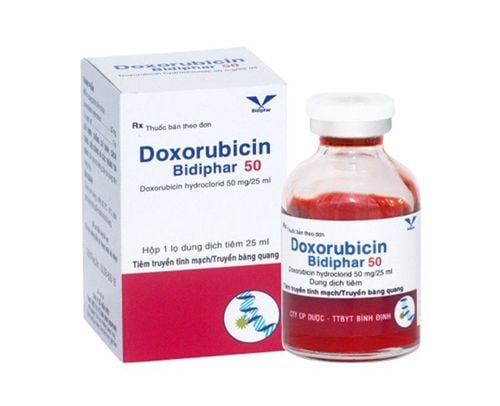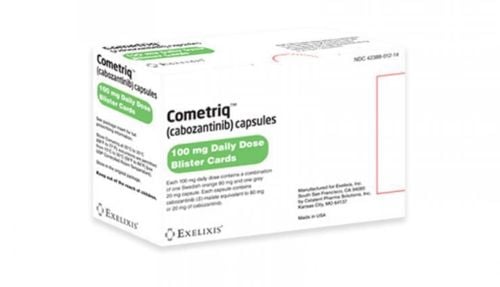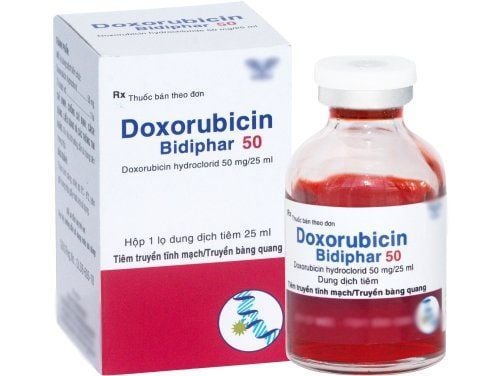This is an automatically translated article.
The article was written by MSc. Pharmacist Nguyen Le Trang - Faculty of Pharmacy - Vinmec Times City International HospitalUses: Anthracycline cancer treatment drug
The drug is indicated in many cases of cancer: Breast, ovarian and stomach cancer, Hodgkin's or non-Hodgkin's lymphoma, bladder cancer, acute leukemia , multiple myeloma, Wilms tumor, soft tissue and bone sarcoma.
Dosage and usage
Depends on each regimen and the patient's condition. Some examples of dosing:
Adults:
Breast cancer: AC regimen uses 60 mg/m2 on day 1 every 21 days for 4 cycles (in combination with cyclophosphamide).
Non-Hodgkin lymphoma : 50mg/m2 every 21 days (in combination with cyclophosphamide, vincristine, prednisolone)
How to use:
- Intravenously slowly over at least 3-5 minutes.
- Intravenous infusion: Dilute in 0.9% NaCl or 5% glucose, continuous IV infusion for 24 hours. Change infusion between doxorubicin infusion cycles. Patients at risk of cardiotoxicity should receive continuous intravenous infusion.
- Bladder pump: Dilute in 25 - 50 ml of 0.9% NaCl. Keep the medicine in the bladder for 1-2 hours, changing positions every 15 minutes to ensure even contact with the bladder.

Undesirable effects:
Common : Erythema, pruritus, infusion reactions, bone marrow suppression, vomiting and nausea, oral mucosal ulcers, esophagitis, diarrhea, alopecia, phlebitis, inflammation TM occlusion.
Uncommon : Hand-foot syndrome, skin and hair pigmentation changes, nail formation disorders, increased liver enzymes, increased bilirubin.
Rare: Hypersensitivity reactions (urticaria, anaphylaxis), inflammation of the area previously treated with radiation.
Note:
Bone marrow suppression: Usually causes strong leukopenia, the lowest decrease after 10 days and recovery after 21 days. Platelets and red blood cells decreased slightly.
Cardiotoxicity : May be acute, chronic or late toxicity.
Acute: Electrocardiographic changes, arrhythmias, occur during or shortly after drug infusion. Toxicity is not dose dependent, usually transient but may cause heart failure and myocarditis.
Chronic: Heart failure, cardiomyopathy usually occurs within 1 year after treatment, related to total cumulative dose.
Late toxicity: Left ventricular dysfunction, heart failure, contractility or arrhythmia. Usually occurs many years after treatment.
Infusion reaction: Local erythema along the vein, flushed face if injected rapidly.
Notes during drug use
Urine may turn red after 1-2 days of taking the drug. Monitor blood count, liver and kidney function, uric acid, electrolytes. Monitor ECG and left ventricular ejection fraction before and after treatment, frequency of monitoring depends on cumulative dose and pre-existing risk factors in the patient.
Drugs in the group of high risk of vomiting.
If you have a need for consultation and examination at Vinmec Hospitals under the national health system, please book an appointment on the website for service.
Please dial HOTLINE for more information or register for an appointment HERE. Download MyVinmec app to make appointments faster and to manage your bookings easily.














